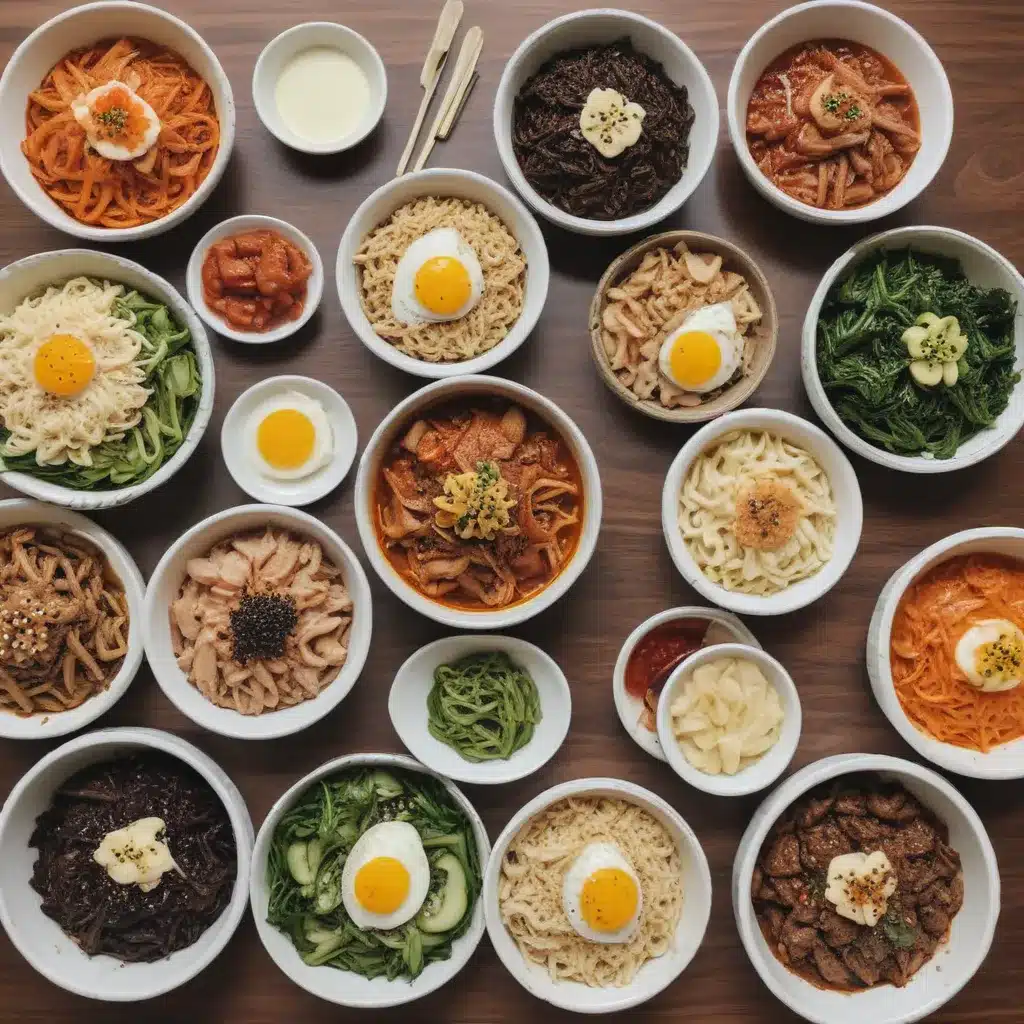
Discovering the Flavors of Korea’s Culinary Capital
As I strolled through the bustling streets of Seoul, the air was thick with the aroma of sizzling meats, the pungent scent of fermented vegetables, and the tantalizing fragrance of simmering broths. This was a foodie’s paradise, a city that had captured my heart and my taste buds.
Growing up, I had always been intrigued by the vibrant and complex flavors of Korean cuisine. From the fiery red glow of kimchi to the harmonious blend of vegetables, meat, and rice in bibimbap, I knew that exploring the culinary wonders of Seoul would be the adventure of a lifetime.
Diving into the World of Bibimbap
One of the first dishes I set out to conquer was the iconic bibimbap. As I stepped into a cozy restaurant, the sight of the beautifully presented bowls filled with an array of colorful ingredients had me eager to dig in.
The traditional version of bibimbap, I learned, features a base of warm white rice, topped with sautéed and seasoned vegetables, marinated beef, a perfectly cooked egg, and a drizzle of a savory sauce. The key to this dish, I discovered, lies in the harmony of the flavors and textures, each component contributing its own unique personality to the overall experience.
As I mixed the ingredients together, the satisfying crunch of the fresh vegetables mingled with the velvety softness of the egg yolk, while the bold and slightly sweet flavors of the beef and sauce tied everything together. It was a symphony of tastes and sensations that left me craving more.
Exploring the Wonders of Kimchi
No journey through Korean cuisine would be complete without an in-depth exploration of kimchi, the iconic fermented side dish that is as integral to Korean culture as it is to the country’s culinary landscape.
As I wandered through the vibrant food markets of Seoul, I was greeted by a dizzying array of kimchi varieties, each with its own distinct flavor profile and unique presentation. From the fiery and pungent napa cabbage kimchi to the more delicate and sweet radish kimchi, I was eager to explore the nuances of this centuries-old tradition.
One of the highlights of my kimchi odyssey was visiting a traditional kimchi-making workshop, where I had the opportunity to learn the intricate process of fermentation and the careful balance of ingredients that gives each type of kimchi its distinctive character. As I watched the skilled artisans at work, I couldn’t help but feel a newfound appreciation for the dedication and attention to detail that goes into creating these culinary masterpieces.
Discovering the Wonders of Temple Food
In my quest to uncover the hidden gems of Korean cuisine, I stumbled upon the fascinating world of Buddhist temple food, a culinary tradition that celebrates the purity and simplicity of plant-based ingredients.
As I stepped into the serene surroundings of a Buddhist temple, I was greeted by the gentle hum of meditative chants and the aroma of simmering broths and fragrant herbs. The chefs, known as temple food masters, guided me through a multi-course feast that showcased the depth and complexity of this unique culinary style.
From the delicate and delicious mushroom soup to the perfectly balanced bibimbap-inspired dish, every bite was a revelation. The flavors were bold yet harmonious, the textures were varied and intriguing, and the overall experience was one of tranquility and mindfulness.
As I savored each course, I couldn’t help but feel a sense of connection to the rich cultural heritage that had given birth to this remarkable culinary tradition. It was a testament to the power of simplicity, the beauty of nature, and the art of finding joy in the present moment.
Embracing the Diversity of Korean Cuisine
As my time in Seoul drew to a close, I reflected on the incredible journey I had embarked upon, a journey that had taken me deep into the heart of Korean culinary culture. From the vibrant and dynamic streets of the city to the serene and contemplative spaces of the Buddhist temples, I had discovered a world of flavors and traditions that had captivated my senses and my soul.
Whether I was indulging in the comfort and familiarity of a classic bibimbap or exploring the nuanced and complex flavors of temple food, I had come to appreciate the incredible diversity and depth of Korean cuisine. And with each bite, I had gained a deeper understanding of the rich history, the cultural traditions, and the unwavering dedication to quality that defines this remarkable culinary landscape.
As I prepared to depart, I knew that the memories of my time in Seoul would forever be etched in my mind, a testament to the power of food to connect us, to inspire us, and to transport us to new and wondrous places. And with a renewed appreciation for the culinary treasures of Korea, I couldn’t wait to return and continue my exploration of this remarkable country and its captivating cuisine.
So, if you find yourself in Seoul, be sure to venture beyond the bustling streets and immerse yourself in the vibrant and ever-evolving world of Korean food. From the humble and comforting bibimbap to the refined and introspective temple food, the flavors of this culinary capital will leave an indelible mark on your heart and your taste buds. And who knows, you might just find yourself, like me, falling in love with the rich tapestry of Korean cuisine.

